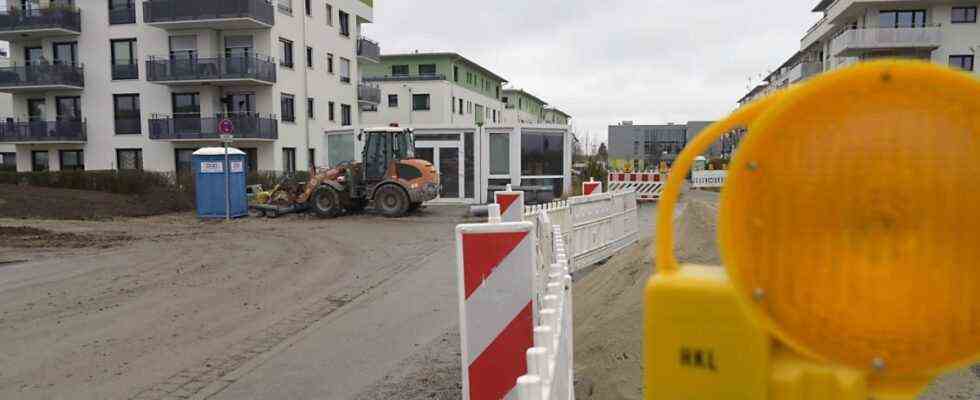It’s about 30 meters. A really short connection, for which the municipality of Unterhaching needs a lot longer than for some large construction projects. Seldom has a plan heated so much as the crossing of the “Green Center” on the stump meadow. Because the opinions of the residents about what the currently fallow spot in the new development area should look like have been very different for many years. The administration and the municipal council therefore proceed with the utmost care when it comes to the breakthrough between Witneystraße and Ludwig-Specht-Straße. In its most recent meeting, the municipal council has now decided: It should be a pedestrian and cycle path. How it will ultimately be designed, however, the municipality is planning extensive public participation.
“Inform and take away” is the name of the building authority manager Stefan Lauszat, with which the eleven variants of a footpath and cycle path that are now available through the green center are to be discussed with the residents. The municipality has commissioned the architecture office “Studio-Stadt-Region” to organize this dialogue with the citizens. Their experts are to develop a “hybrid course format”. According to Lauszat, this includes both information boards in the Green Center and citizen consultation hours “where everything is explained to the citizens”. The building authority manager promises a “direct exchange”, people should have no idea how such a site control procedure works.
There should be a survey, but no vote
The weatherproof boards are to be provided with QR codes that digitally lead to further information about the planning. An online survey is to follow, as well as a survey with postcards that can be filled out and thrown in at the town hall. “This is not a vote, but a collection of ideas,” explains Lauszat. Because there have been enough signature campaigns for a breakthrough with car traffic and a connection without a road in the past seven years. The result was always: about half of the residents want to drive through the Green Center, the others are strictly against it.
“There is a lot to be discussed in the eleven variants now available,” says Lauszat. The residents will be able to comment on whether they want to put the path connection in the foreground or prefer a place with a high quality of stay. Another alternative would be a shared space, but without cars. Because the local council has already decided against it with a majority, without the votes of the CSU parliamentary group, which wanted to discuss a variant with motorized traffic with the citizens and was therefore against the decision.
Not everyone in the local council is completely convinced of the approach. Christa Helming (Free Voters) said: “I’m amazed at what a lot of effort we put into such a small place.” Emil Salzeder from the Neo parliamentary group raised concerns that the assignment to the external office for citizen participation sounded “not exactly cheap”. Mayor Wolfgang Panzer (SPD) defended the extensive involvement of the citizens. “There are a large number of people out and about wanting to participate, so we will be putting funds in,” he said. An external office is also important in order to obtain neutral information and then to make urban planning decisions and not on the basis of personal discussions. Panzer also admits: “Yes, we put a lot of effort into it, but this is about a small cause with a big effect.”

